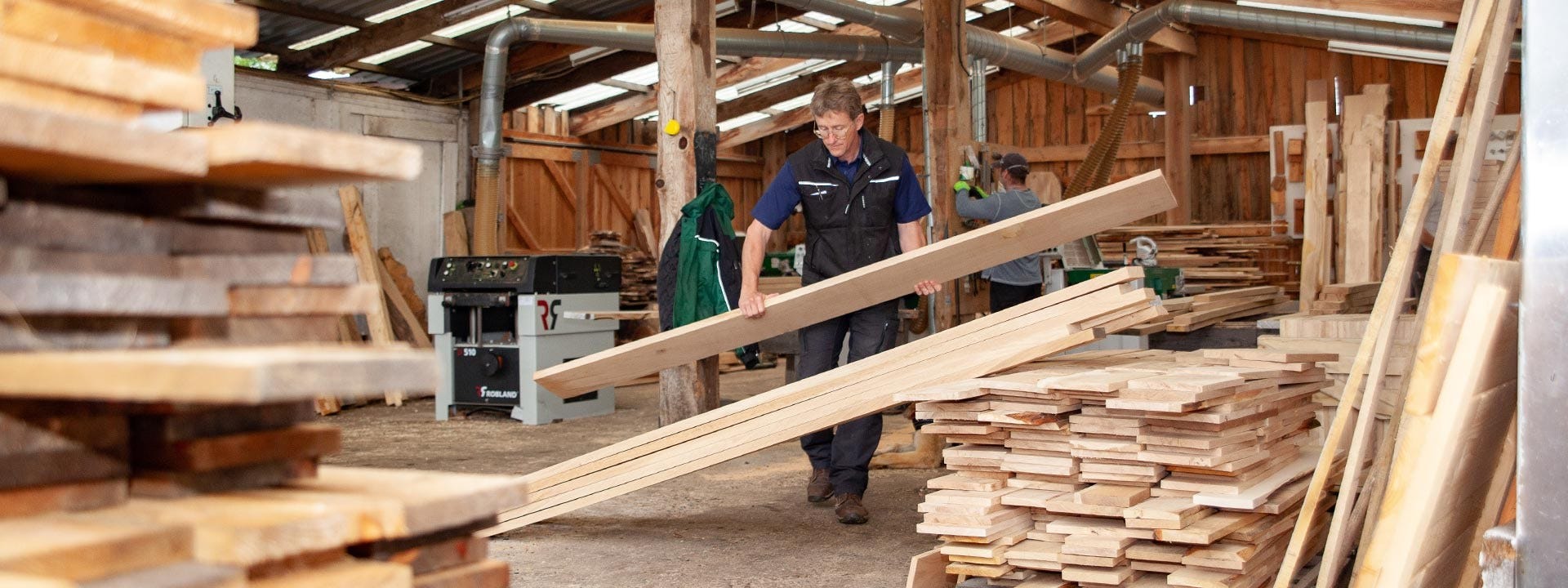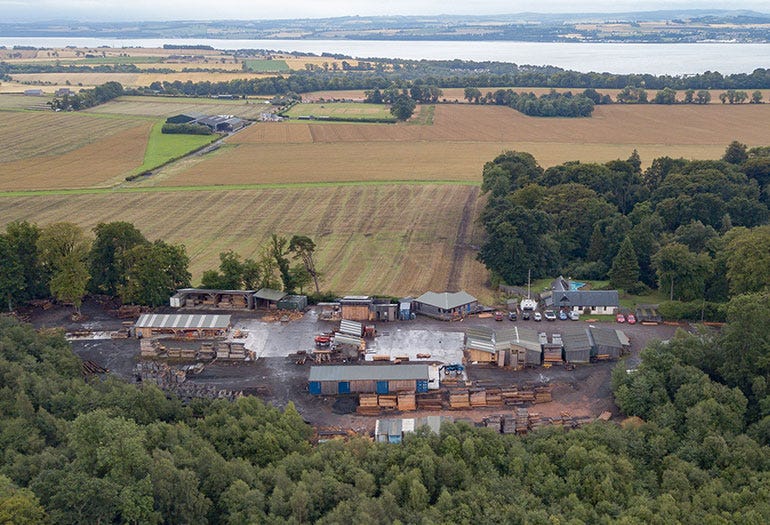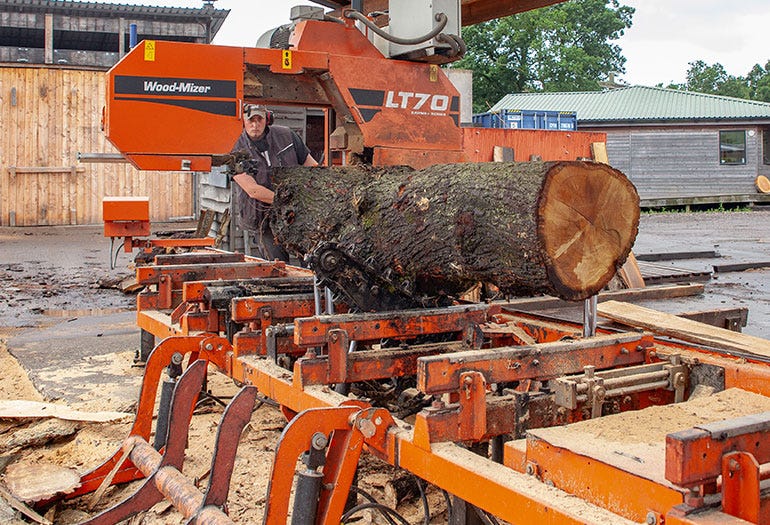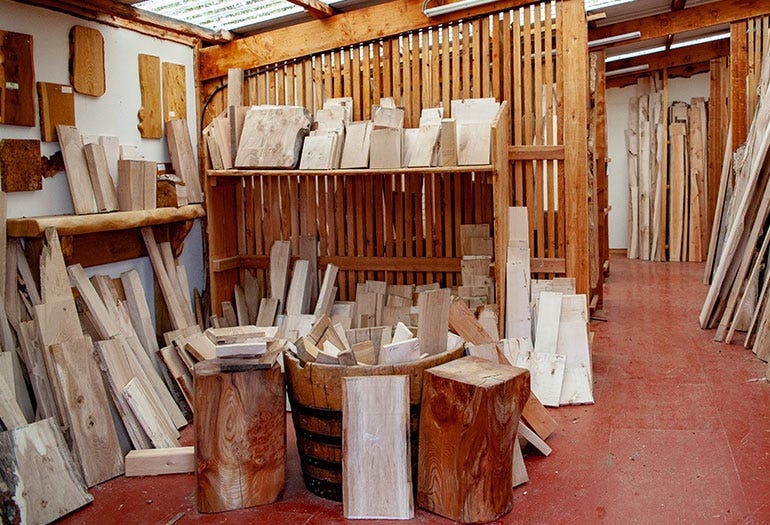Scottish Wood Sawmill Successfully Utilizing Local Scottish Timber

In Dunfermline, a little village north of Edinburgh, Scottish Wood has grown substantially over the past 20 years. They are a social enterprise - a charity which owns a sawmill and supplies local builders with locally grown timber.
“We are primarily a hardwood sawmill. We cut homegrown, Scottish grown hardwoods and also some larch and Douglas fir,” Jim Birley from Scottish Wood says.
WHY HOMEGROWN WOODS?
Jim notes that the demand for local and homegrown timber is growing. His customers are now much more aware of the importance of supporting local business and the environment with their timber buying choices. “People now realize, that to buy a piece of wood, actually contributes to woodlands. It doesn't diminish... It means the tree is being used, and that gap is being refilled with more trees,” he says. “They like to know that they are contributing to the homegrown market and to the industry.”




A SAWMILL WITHOUT A SAW.
“We initially started without a saw at all. We called ourselves a sawmill with only a kiln and a chainsaw,” Jim recalls.
They had to hire a mobile sawmill once a month to mill their stock. It took lots of time and was inconvenient to continue long-term. It soon became clear that they needed their own sawmill.
“We started with a Wood-Mizer LT25, and then we graduated to an LT40, of which we've had two or three. Now we run an LT70 and a new LT70 Remote” Jim explains.
The LT70 Remote line provides several features enhancing the productivity of the sawmill.
“The line consists of a log deck, LT70 sawmill, conveyor and a transfer table - that is our unit geared toward production, so it is cutting our stock sizes,” he says.


MAKING SCOTTISH TIMBER WORK.
Despite the industry standard of using imported timber, Scottish Wood has demonstrated the viability of using locally grown and harvested timber for their clients, who more and more are looking to support local industry. A contributing factor to their success is their choice of the thin-kerf Wood-Mizer sawmilling equipment that increases recovery from their logs.
“The Softwood industry works on a fairly low recovery rate. It could be even as low as 50%,” Jim explains. “We have much higher recovery. I would estimate that we probably have more like 75% percent.”
Jim is pleased with what Scottish Wood has become. “It feels good to use local resources sustainably, work with a lovely material and with nice people,” he says.






























In Dunfermline, a little village north of Edinburgh, Scottish Wood has grown substantially over the past 20 years. They are a social enterprise - a charity which owns a sawmill and supplies local builders with locally grown timber.
“We are primarily a hardwood sawmill. We cut homegrown, Scottish grown hardwoods and also some larch and Douglas fir,” Jim Birley from Scottish Wood says.
WHY HOMEGROWN WOODS?
Jim notes that the demand for local and homegrown timber is growing. His customers are now much more aware of the importance of supporting local business and the environment with their timber buying choices. “People now realize, that to buy a piece of wood, actually contributes to woodlands. It doesn't diminish... It means the tree is being used, and that gap is being refilled with more trees,” he says. “They like to know that they are contributing to the homegrown market and to the industry.”


A SAWMILL WITHOUT A SAW.
“We initially started without a saw at all. We called ourselves a sawmill with only a kiln and a chainsaw,” Jim recalls.
They had to hire a mobile sawmill once a month to mill their stock. It took lots of time and was inconvenient to continue long-term. It soon became clear that they needed their own sawmill.
“We started with a Wood-Mizer LT25, and then we graduated to an LT40, of which we've had two or three. Now we run an LT70 and a new LT70 Remote” Jim explains.
The LT70 Remote line provides several features enhancing the productivity of the sawmill.
“The line consists of a log deck, LT70 sawmill, conveyor and a transfer table - that is our unit geared toward production, so it is cutting our stock sizes,” he says.

MAKING SCOTTISH TIMBER WORK.
Despite the industry standard of using imported timber, Scottish Wood has demonstrated the viability of using locally grown and harvested timber for their clients, who more and more are looking to support local industry. A contributing factor to their success is their choice of the thin-kerf Wood-Mizer sawmilling equipment that increases recovery from their logs.
“The Softwood industry works on a fairly low recovery rate. It could be even as low as 50%,” Jim explains. “We have much higher recovery. I would estimate that we probably have more like 75% percent.”
Jim is pleased with what Scottish Wood has become. “It feels good to use local resources sustainably, work with a lovely material and with nice people,” he says.
















